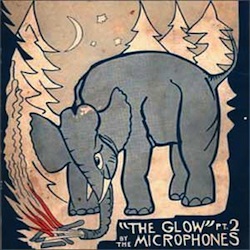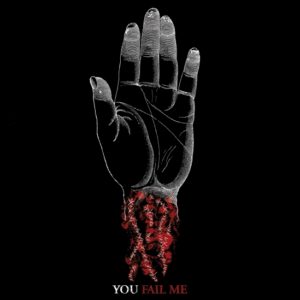10 Essential back-to-back song pairs

In the debate over the endangered life of the album, one often overlooked aspect are those songs that don’t comprise an album itself, yet defy being separated from one another. We might call them suites, or simply song pairs, but they are two separate pieces of music fused together to create a more robust single work. It’s, admittedly, a relic of the classic rock era. Throughout countless albums made in the ’60s, ’70s and ’80s, this phenomenon happens again and again, and we left out a long list of them (one in particular that I imagine someone will complain about in 3,2,1…). But we picked some of our favorites of the bunch, including a handful of more recent back-to-back song pairs that prove the art is still alive. Listen along with our playlist to hear how they stack up.
Queen photo by Carl Lender, Creative Commons [CC BY-SA 3.0]
 Led Zeppelin – “Heartbreaker”/”Livin’ Lovin’ Maid”
Led Zeppelin – “Heartbreaker”/”Livin’ Lovin’ Maid”
from Led Zeppelin II (1969; Atlantic)
When my nine-year-old daughter finally asks me what the big deal was with Led Zeppelin anyway, I will play her this pair of tracks from 1969’s Led Zeppelin II. These are the songs that introduced me to the band, and it wasn’t until a while later that I realized that they were two different songs. The pause between the two is brief; the reverb from Robert Plant’s “Heart…” barely silences before he sings “…with a purple umbrella and a fifty-cent hat.” It can be seen as one sentence, but clearly there are two different women being discussed: Annie, the “Heartbreaker,” is an object of infatuation who disappeared for ten years; the “maid” is reportedly based on a groupie who used to follow the band around. As linked as these songs were on the album and the radio, however, the latter was never performed live by the band, casting doubt on the deliberateness of the link. But most of us can’t hear the end of first without automatically recalling the beginning of the second. – Chad Gorn
 Pink Floyd – “Brain Damage”/”Eclipse”
Pink Floyd – “Brain Damage”/”Eclipse”
from Dark Side of the Moon (1973; Harvest)
The downside of the digital era is that if you play songs on shuffle, you can’t tell iTunes to link two songs at all times. So when “Brain Damage” comes on, and the next song is not “Eclipse,” it sounds unnatural. The soft “D” in one begs to be followed by the full-out “D” in the next. While the central themes of Dark Side of the Moon—the stages of life, and the excesses and limitations that impact one’s mental state—are present in these two tracks, they are the only two to feature the titular celestial body so prominently. The end of “Brain Damage” builds to the beginning of “Eclipse” with a declarative drum fill, effectively making them one song with two movements. Many songs on DSOTM bleed into one another, (heck, I didn’t even know that “Any Colour You Like” was its own song for years), but these two are designed to be played together, iTunes be damned. – Chad Gorn
 Queen – “We Will Rock You”/”We are the Champions”
Queen – “We Will Rock You”/”We are the Champions”
from News of the World (1977; EMI/Elektra)
Maybe radio programmers sensed two minutes of mostly a capella vocals and body rhythms made “We Will Rock You” somehow too slight and braved a second-long gap to have the sweeping arrangements of “We are the Champions” back it up. But damn, Queen pretty much dared people to avoid playing and hearing these songs together. Both cuts formed the opening salvo of News of the World; both were inspired by the same Birmingham, England concert crowd; both were released on the same single; both were consistently performed back-to-back live. Each song inextricable from the world of sports, they also comprise probably the gold-medal example of the song pairs we’re investigating here. – Adam Blyweiss
 Van Halen – “Eruption”/”You Really Got Me”
Van Halen – “Eruption”/”You Really Got Me”
from Van Halen (1978; Warner Bros.)
Sure, Van Halen’s pumped-up version of The Kinks’ “You Really Got Me” can certainly stand on its own, and it’s frequently played out that way. Yet true AOR fans know it somehow feels incomplete without the lead-in provided by Eddie Van Halen’s mind-melting 100-second guitar solo. One of the first of its kind—with Eddie using a two-handed tapping style—and still one of the best rock solos committed to tape, “Eruption” channels technical and artistic beauty common to classical music but relatively new to metal. The guitar fades to nothing before reappearing to surround David Lee Roth’s ecstatic, squealing, hypersexualized delivery of the band’s first single. – Adam Blyweiss
 Soft Cell – “Tainted Love”/”Where Did Our Love Go?”
Soft Cell – “Tainted Love”/”Where Did Our Love Go?”
(1981; Sire)
This is not a song pair in about the same manner as “this is not a pipe.” The first half is this New Wave duo’s despairing cover of a 1964 song by Gloria Jones, their short but star-making breakthrough from their 1981 debut Non-Stop Erotic Cabaret. The back half is another 1964 cover found one release and seven months later, a version of The Supremes’ first No. 1 hit included on the even more synth-poppy Non Stop Ecstatic Dancing EP. Where do we actually find them pieced together? The A-side of the “Tainted Love” single that preceded both of these releases, with the title cut flowing directly into Marc Almond’s reedy take on “Where Did Our Love Go?” like a medley. – Adam Blyweiss
 INXS – “Need You Tonight”/”Mediate”
INXS – “Need You Tonight”/”Mediate”
from Kick (1987; Atlantic)
As the Australian band’s only No. 1 song in the United States, we could default “Need You Tonight” to the Best INXS Song Ever. A quickly inspired Andrew Farriss riff, famously looped rimshot percussion, and Michael Hutchence’s glowering delivery came together in a spacious, spare, staggered arrangement that was both fun and tense all at once. On Kick, “Need You Tonight” segues nicely into “Mediate” because both relied on synthesized backing tracks and Hutchence’s breathy huskiness. In an inspired Duran Duran moment, music video director Richard Lowenstein made a clip for both songs at once that cemented INXS’ legacy as one of the last great “video bands” of the 1980s. The animated visuals of the “Need You Tonight” portion may not completely jibe with the Bob Dylan homage in “Mediate,” but if you’re not looking forward to hearing the second song after the first you’re lying to yourself. – Adam Blyweiss
 Green Day – “Brain Stew”/”Jaded”
Green Day – “Brain Stew”/”Jaded”
from Insomniac (1995; Reprise)
It wasn’t a true sophomore slump, but the second major-label album from the Bay Area pop-punk legends definitely took a few steps backward. How else can you explain needing two songs here to equal the power of any anthem off of Dookie? But oh, what songs they were. Billie Joe Armstrong starts to break off chunky guitar riffs in track 10, a march dedicated to meth use. Tre Cool and Mike Dirnt follow him through a power-chord drone into track 11, eventually lifting him away into a double-time whirlwind meditation on the relentlessness and ultimate deadliness of the workday. – Adam Blyweiss
 Neutral Milk Hotel – “The King of Carrot Flowers Pt. 1″/”The King of Carrot Flowers Pt. 2 & 3”
Neutral Milk Hotel – “The King of Carrot Flowers Pt. 1″/”The King of Carrot Flowers Pt. 2 & 3”
from In the Aeroplane Over the Sea (1998; Merge)
Those who’d prefer to split hairs might point out that this is, in fact, three parts. Yet on In the Aeroplane Over the Sea, the three-part “King of Carrot Flowers” progression is split into two tracks, making it a miniature song cycle in the context of a breathtaking whole. They form separate parts of the sometimes contradictory nature of Neutral Milk Hotel’s music. Part One is Jeff Mangum’s psychedelic folk at its simplest and most gorgeous, a song of teenage lust contrasted with abusive spouses that finds yin and yang parallels in genuine feelings of joy and pain, discovery and defeat. Part two, meanwhile, is a droning prayer to Jesus Christ, while the final part of the triptych is a noisy whirr of lo-fi punk that’s the least affecting but certainly the most fun of the three. It’s a hell of a ride—from beautifully sad poetry to zen-like incantations to rock ‘n’ roll noisemaking—and it’s over in five minutes. – Jeff Terich
 The Microphones – “I Want Wind to Blow”/”The Glow Pt. Two”
The Microphones – “I Want Wind to Blow”/”The Glow Pt. Two”
from The Glow Pt. 2 (2001; K)
If it were up to me, “The Moon” would be the ultimate companion piece to both “I Want Wind To Blow” and “The Glow Pt. 2,” the back-to-back leadoff tracks from The Microphones’ third studio album, The Glow Pt. 2. The songs truly are a quintessential pairing. They feed off one another’s existence, sonically lacing through an orchestral lo-fi arrangement, while swelling with frontman Phil Elverum’s unfeigned and unrestrained lyricism. Warbling organs, off-kilter finger picking, and a blown-out drumset provide the backdrop for the scene set in The Glow Pt. 2’s first moments. Following catastrophe, Elverum calls for rejuvenation. The thunderclouds may have broken up, but there’s apprehension and fear of the future. The Glow Pt. 2 explores this isolated uncertainty, forging a conceptual universe of tape blur and staticky ambience.- Patrick Pilch
 Converge – “First Light”/”Last Light”
Converge – “First Light”/”Last Light”
from You Fail Me (2004; Epitaph)
Every Converge album typically opens in mid-explosion—shrapnel flying, blood pumping, a state of confusion and chaos before everything begins to truly make sense. You Fail Me is different; it opens with the sound of patience and pause, of open space and ambience. “First Light” is an instrumental piece that relies solely on Kurt Ballou’s unusually restrained guitar work to evoke the necessary emotional resonance. It’s simply a prologue for the companion “Last Light,” however, a proper song that erupts from its predecessor’s vast space into the kind of tension and intensity that Converge has made their stock in trade. But even this isn’t as violent and visceral as Converge’s most furious openers, like “Concubine” or “Dark Horse.” It’s a slow-build with a machine-gun backing, one of their most masterfully composed songs that also happens to feel like total destructive. Separately, each is powerful in its own way; together they comprise a brief yet epic suite. – Jeff Terich

How could this list have forgotten the incredible song pair from Bob Seger’s Live Bullet album…Travelin Man/Beautiful Loser?
I’ve always like Kids Wanna Rock/It’s Only Love from Bryan Adams ‘Reckless.’
Built to Spill should have renamed “Wherever You Go” as “Sunday,” so it will always “Saturday”
ZZ Top: Waitin’ for the Bus / Jesus Just Left Chicago.
Wait’n in the bus/ Jesus dine left Chicago
Zztop
Dinosaur Jr: “Blowing It,” “I Live For That Look”
How about Journey – Feeling That Way / Anytime?
Always sounds weird to hear Feeling That Way end and not have it immediately go into, “Oooh, ooh anytime that you want me”.